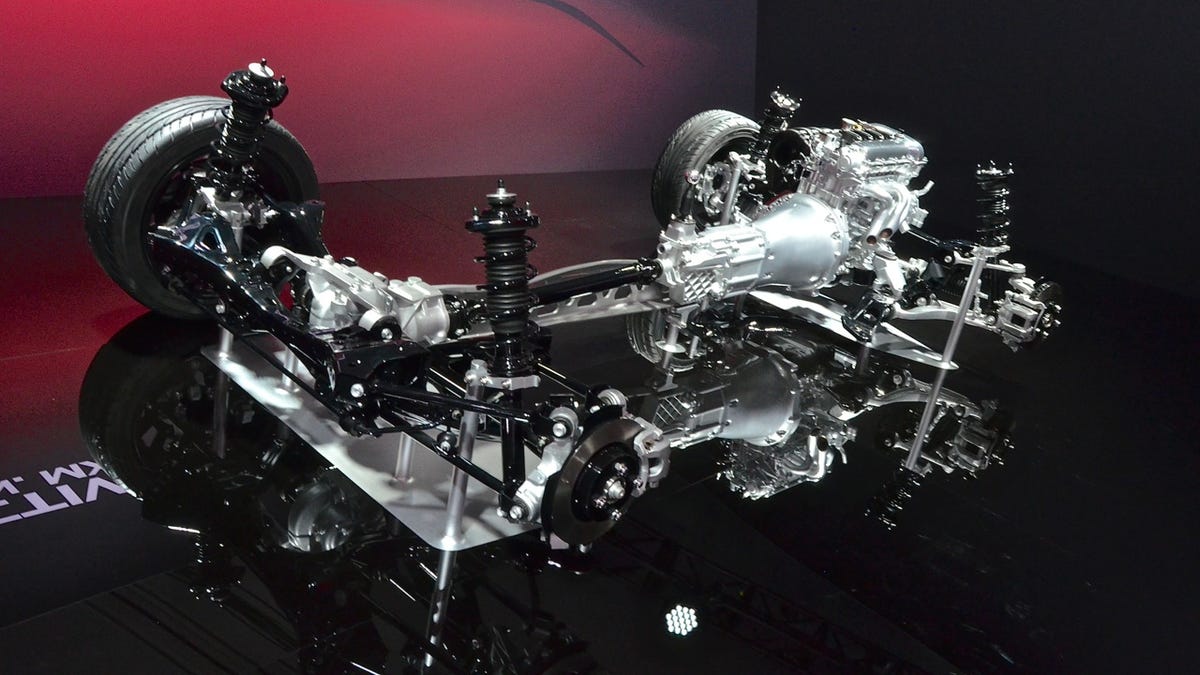7 things the Mazda Skyactiv Chassis tells us about the next Miata
We take close look at the clues and attempt to unravel the mystery of the 2016 Mazda MX-5 Miata.

When Mazda unveiled the Skyactiv Chassis at the 2014 New York auto show, it gave us the first official, concrete glimpse at the upcoming fourth-generation Mazda MX-5 Miata. The roadster's skeleton tells us quite a lot about what we can expect from the next Miata when it arrives, so let's take a closer look and uncover these clues.
It adds lightness. This is the most obvious change and the one that the automaker has been most vocal about. Mazda is targeting a 220-pound (100 kg) reduction from the MX-5's current curb weight, dipping into the 2,000 to 2,200-pound range and jiving nicely with the first-generation model's 2,070 pounds. Less weight means improvements across the board to acceleration, braking, and handling, as well as improved fuel efficiency.
It probably won't be more powerful. Less weight also means that Mazda doesn't have to add more power to get the kind of performance gains that automakers like to claim at the launch of a new model. Across the industry, we've been seeing automakers launching new, lightweight models without the annual power gains that we've come to expect (or even with slight power reductions), all in the name of improving efficiency and driveability.
And since overwhelming horsepower has never been the point of the Mazda Roadster, don't expect the next Miata to be more powerful than it is now. With 1.5 and 2.0-liter Skyactiv G engines rumored to end up under the fourth-generation MX-5's hood, it could end up being less powerful than the current model. Expect anywhere between 98 to 150 hp.
It will technically be mid-engined. First- and second-generation Miatas sat the engine squarely atop the front axle's centerline. The third-generation model pushed the engine's center of mass behind the axle for better balance. The Skyactiv Chassis shoves the entire mass of the engine even further back, completely behind the centerline of the front axle, completing the transition to a front, midships configuration. The potential advantages are even better vehicle balance, less tendency to understeer while cornering, and the visual improvement of a shorter front overhang.
The wheelbase will be a tad longer. I didn't pack my tape measure, but the Skyactiv Chassis' wheelbase appears to be a bit longer than the third-generation model's 91.7 inches. The next Miata probably has this slight forward stretch of the front wheels to thank for part of its new front, midships setup.
The wheelbase stretch also has the potential to settle the MX-5's ride on the highway and improve cornering stability, smoothing the transition to oversteer for better predictably near the handling limits.
The center of gravity will be its lowest ever. Mazda tells us this, but doesn't state exactly how much lower. I'd guess that tucking the engine's heavy bits lower and further back in the bay contribute significantly to the center's drop. I don't think the Miata's already low ride height will get too much lower, but I'm only guessing here.
It will use electric power steering (EPS). This is no real surprise as fuel-saving EPS is part of Mazda' Skyactiv technology suite. Before you grab your torches and pitchforks, fellow Roadster purists, remember that the lightweight MX-5 is getting even lighter, so it won't need much in the way of assistance at all, so steering feel may not necessarily suffer in the transition to electric boost. Mazda has also located the assist motors directly on the steering rack, which should help keep vagueness from entering the equation.
It'll be a hoot to drive. I'm just guessing, but the Miata always has been a fantastic little driver's car, and I don't see that changing for this next generation. With less weight, evolved handling, and (hopefully) more of the Jinba Ittai -- the the oneness between horse and rider or car and driver -- that we've come to love from Mazda, it's got this Miata fanboy more than a little excited.

